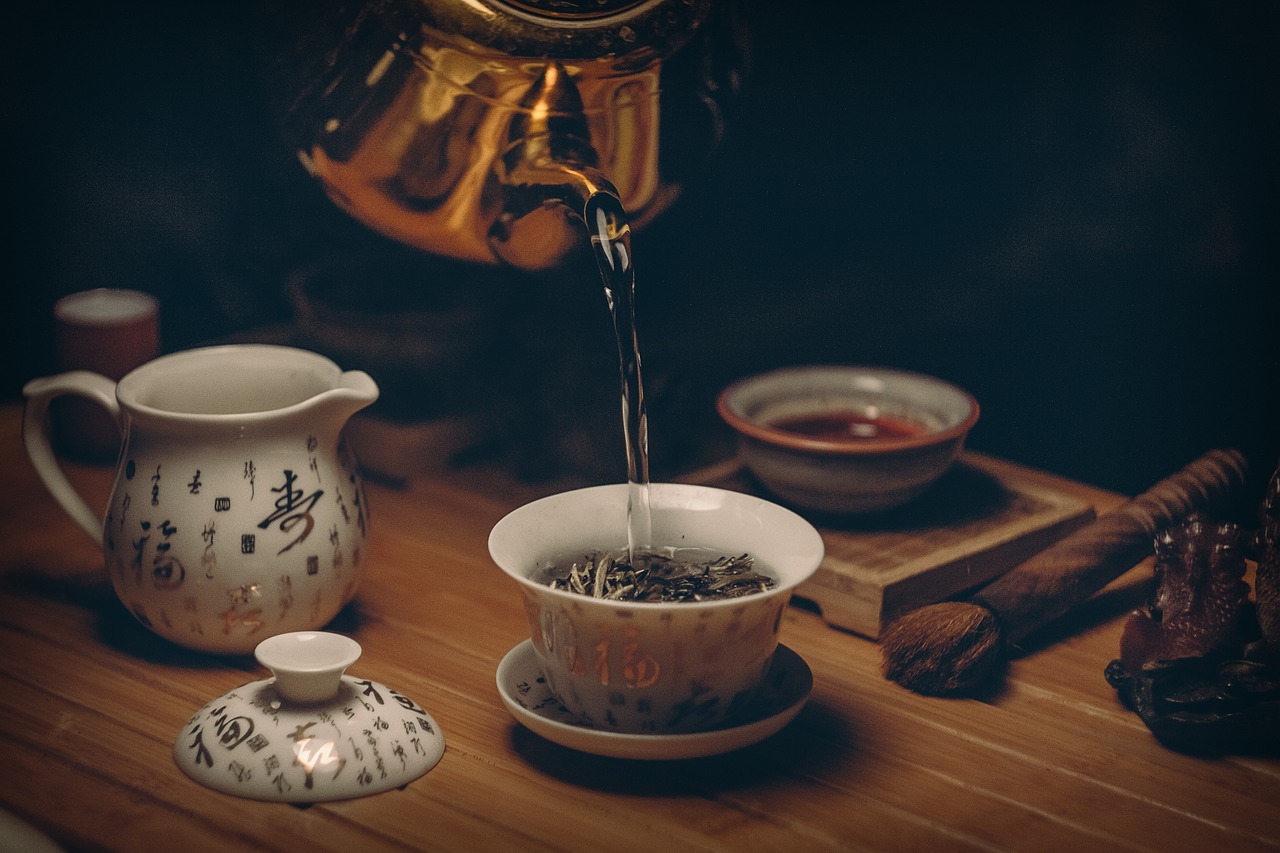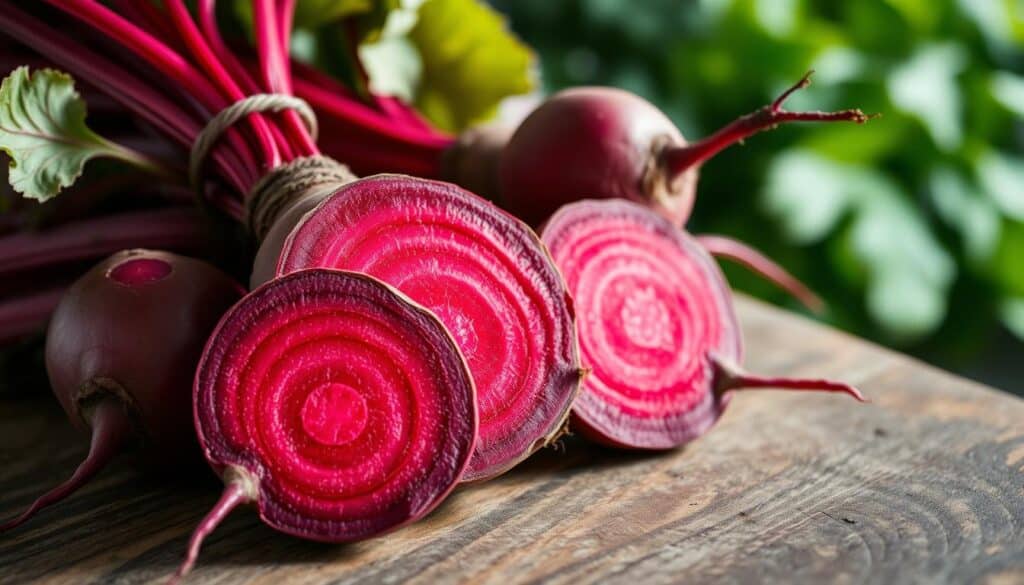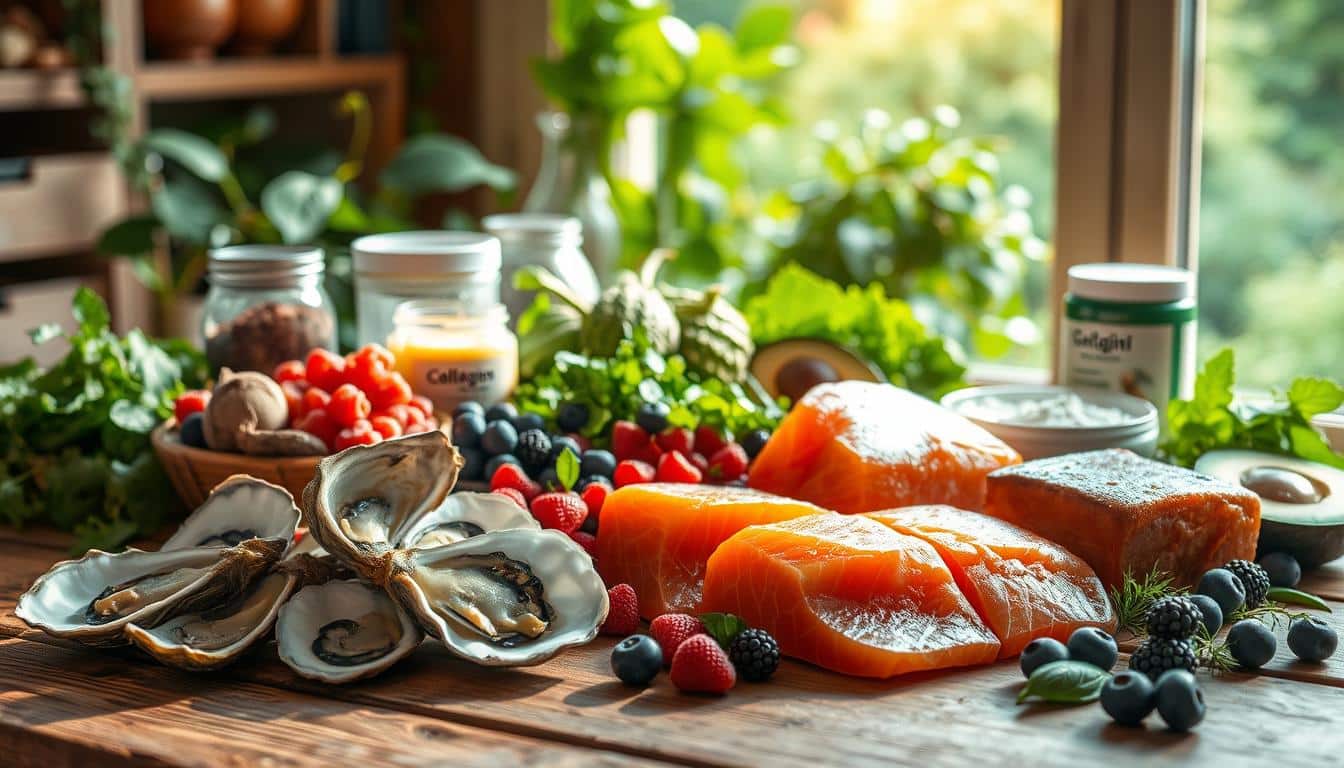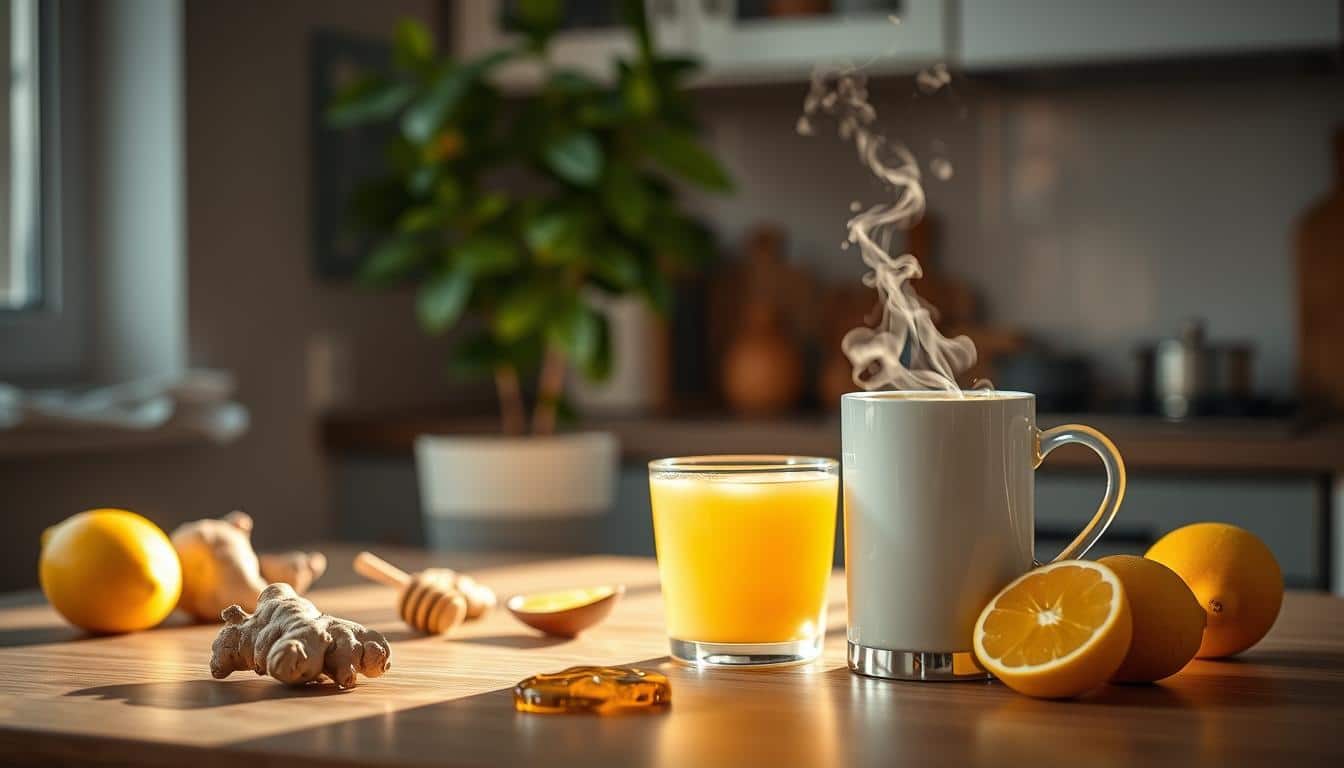Anúncios
This short guide explains how food-first choices can support heart health and help lower blood pressure naturally. It focuses on evidence-based, practical steps you can use alongside medical care to reduce cardiovascular risk factors. The emphasis is on whole, minimally processed items and dietary approaches to hypertension that research and organizations like the American Heart Association support.

Hibiscus Tea
The content is written for U.S. adults who want a clear blood pressure diet guide—whether you have prehypertension, established high blood pressure, or want to protect your cardiovascular system. Recommendations reflect DASH principles and heart-healthy foods, but they are not a substitute for individualized medical advice.
Anúncios
The guide is organized to explain why diet matters, highlight natural foods for healthy blood pressure, outline specific items and eating patterns, and provide meal planning and cooking tips. It also covers lifestyle factors, monitoring, and common myths so you can make sustainable changes.
Many people see modest blood pressure reductions, better vascular function, and improved weight or lipid profiles with these strategies. Results vary, and people taking antihypertensive medications or potassium-affecting drugs should consult their clinician before major diet changes, especially when increasing potassium-rich foods.
Anúncios
Key Takeaways
- Focus on natural foods for healthy blood pressure: whole fruits, vegetables, whole grains, lean proteins, and healthy fats.
- This blood pressure diet guide follows evidence-based, food-first strategies consistent with AHA and DASH recommendations.
- Dietary approaches to hypertension can complement medication and reduce cardiovascular risk for many people.
- Expect modest, meaningful improvements in blood pressure, weight, and lipid measures; individual results vary.
- Consult your clinician before big changes if you take blood pressure medicines or potassium-sparing drugs.
Why Diet Matters for Blood Pressure and Heart Health
Food choices shape blood pressure and long-term heart health in ways many people underestimate. Small shifts in what you eat can change vascular tone, weight, blood sugar, and cholesterol at once. This makes diet a powerful tool for both prevention and management of high blood pressure.
How sodium, potassium, and other nutrients affect blood pressure
Sodium raises blood volume and vascular tension, which often pushes systolic and diastolic numbers up. The American Heart Association advises most adults to limit sodium to under 2,300 mg per day, with an ideal target near 1,500 mg for many at risk.
Dietary potassium helps relax vessel walls and promotes sodium excretion. Eating potassium-rich foods such as bananas, potatoes, avocados, and leafy greens supports lower readings. Magnesium and calcium influence vascular tone and endothelial function; nuts, seeds, dairy, and whole grains supply these nutrients.
Dietary nitrate from beets and leafy greens converts to nitric oxide, a vasodilator that can lower pressure in the short term. Together, these nutrients form a balance that affects daily blood pressure control.
Evidence from studies linking diet patterns to hypertension risk
Large trials show the DASH pattern reduces systolic blood pressure by about 8–14 mm Hg in people with hypertension versus typical U.S. diets. That body of DASH evidence remains a cornerstone for clinicians and dietitians.
Meta-analyses link Mediterranean-style eating with fewer cardiovascular events and modest blood pressure reductions. Cohort data tie plant-forward diets to lower incidence of hypertension over time. Trials of individual foods, such as beet juice, omega-3s from fatty fish, and garlic, report measurable effects on pressure in many participants.
Benefits of food-based approaches versus medication-only strategies
Diet-focused therapies can reduce reliance on medication while improving weight, blood glucose, and cholesterol. Food changes treat multiple risk factors at once and usually carry fewer side effects than drugs.
Medication remains essential for many people. The best outcomes come from combining sensible eating with appropriate prescriptions under clinical guidance. Real-world adherence depends on taste, cost, culture, and habit formation, so plans must fit daily life to work long term.
Natural Foods for Healthy Blood Pressure
Eating whole foods can ease blood pressure control by supplying key minerals, fiber, and antioxidants. Small daily swaps make a big difference. Below are practical choices and tips to add to your meals.
Leafy greens: sources of potassium and magnesium
Spinach, kale, Swiss chard, collard greens, and arugula are top potassium-rich greens. Spinach stands out for potassium and magnesium content per cup. These minerals help blood vessels relax and support healthy sodium balance.
Try tossing raw spinach into smoothies, making a kale salad, or sautéing Swiss chard as a side. Frozen greens from Birds Eye or Goya keep nutrients and cut waste while staying budget-friendly.
Berries and citrus for antioxidant support and vascular health
Blueberries, strawberries, raspberries, oranges, and grapefruit contain polyphenols and flavonoids that reduce oxidative stress and improve endothelial function. Short-term trials link berry intake with lower blood pressure and improved arterial stiffness.
Fresh, frozen, or canned in juice-free packing all work. Brands such as Driscoll’s and Dole offer reliable options that fit smoothies, yogurt bowls, or oatmeal.
Whole grains and fiber for long-term blood pressure control
Oats, brown rice, quinoa, barley, and whole-wheat products supply soluble and insoluble fiber. Soluble fiber helps lower cholesterol and improve insulin sensitivity, pathways that support lower blood pressure over time.
Look for Bob’s Red Mill oats, Lundberg brown rice, or whole-grain breads to make swapping easier. Consistent choices of whole grains reduce whole grains hypertension risk in population studies.
Nuts, seeds, and legumes as plant-based protein and healthy fats
Almonds, walnuts, flaxseed, chia, pistachios, lentils, chickpeas, and black beans add magnesium, potassium, unsaturated fats, and plant protein. Research shows pistachios and almonds can improve vascular function and modestly reduce blood pressure.
Snack on a small handful of nuts, sprinkle seeds on salads, and use lentils or chickpeas in stews and salads. Keep allergy considerations in mind when offering nuts and blood pressure-friendly mixes to others.
Specific Foods That Lower Blood Pressure

Small changes to your plate can help support healthier blood pressure. Focus on whole foods with known effects on circulation, inflammation, and sodium balance. Below are practical choices and simple ways to include them in your routine.
Beets and nitrate-rich vegetables for improved circulation
Dietary nitrate in vegetables converts to nitric oxide in the body. Nitric oxide relaxes blood vessels and can lower blood pressure within hours to days after intake. Trials have shown beet juice or cooked beets reduce systolic readings by several mm Hg in short-term studies.
Top nitrate-rich vegetables include beets, arugula, spinach, and celery. Try a beet salad with arugula, roast beets with a splash of lemon, or a morning smoothie with spinach and frozen beets. These serving ideas make nitrate-rich vegetables easy to eat regularly for steady benefits.
Fatty fish and omega-3s for inflammation reduction
Fatty fish provide EPA and DHA, two omega-3s linked to vascular health. Regular consumption can modestly lower blood pressure and improve endothelial function. Salmon, mackerel, sardines, and anchovies are top sources.
Aim for two servings of fatty fish per week, following American Heart Association guidance. When shopping, pick trusted brands like Wild Planet or choose sustainably sourced options. High-quality fish oil supplements can help when fish intake is low, but check dosage and purity before use.
Garlic, herbs, and spices as sodium-free flavor boosters
Garlic contains allicin and other bioactive compounds with modest blood pressure effects in trials using aged garlic extract or fresh garlic. Results vary by formulation, so consistent intake matters for benefit.
Using herbs instead of salt keeps flavor while cutting sodium. Basil, oregano, rosemary, turmeric, cinnamon, and black pepper add depth and anti-inflammatory notes. Try these seasoning combos: basil + lemon + black pepper for fish, rosemary + garlic + lemon for roasted vegetables, turmeric + cinnamon + black pepper for grain bowls.
Salt-free blends such as Mrs. Dash make switching easier. Pair these choices with nitrate-rich vegetables and fatty fish to build a practical eating pattern that supports vascular health.
| Food | Key Compounds | Typical Effect on BP | Serving Ideas |
|---|---|---|---|
| Beets | Nitrates → Nitric oxide | Lower systolic by a few mm Hg short-term | Roasted beets, beet-arugula salad, beet smoothie |
| Arugula & Spinach | Dietary nitrates | Improved circulation, small BP benefit | Salads, pesto, smoothie greens |
| Salmon, Mackerel, Sardines | EPA & DHA (omega-3) | Modest BP reduction, better endothelial function | Grilled salmon, canned sardines on toast, mackerel salad |
| Garlic | Allicin and sulfur compounds | Modest BP lowering with consistent use | Raw or roasted in dressings, aged garlic supplements |
| Basil, Oregano, Turmeric, Cinnamon | Polyphenols, anti-inflammatory compounds | Supportive, allows salt reduction | Herb rubs, spice blends, turmeric rice |
| Celery | Dietary nitrates, fiber | Supports circulation and modest BP benefit | Raw snacks, chopped in soups, juiced with beets |
Diet Patterns That Support Healthy Blood Pressure
Choosing a clear eating pattern makes it easier to meet daily goals for fruits, vegetables, whole grains, and lean protein. The right pattern can lower blood pressure, improve heart health, and simplify grocery shopping and meal prep.
The DASH framework
DASH stands for Dietary Approaches to Stop Hypertension. It emphasizes fruits, vegetables, low-fat dairy, whole grains, lean protein, nuts, and seeds while cutting sodium and saturated fat. A practical target is 4–5 servings of fruit and 4–5 servings of vegetables daily, 2–3 servings of low-fat dairy, and limited red meat and sweets. Simple swaps include Greek yogurt for cream, beans for processed meats, and herbs for salt. Trusted resources such as the National Heart, Lung, and Blood Institute and the American Heart Association offer sample menus and trackers to help with adherence to DASH diet blood pressure goals.
Mediterranean-style eating
This pattern centers on olive oil as the main fat, abundant vegetables and legumes, whole grains, moderate fish and poultry, and limited red meat. Meals often pair salads, grilled fish, and legumes. Large trials such as PREDIMED showed fewer cardiovascular events and modest reductions in blood pressure with Mediterranean-style eating. When aiming for Mediterranean diet blood pressure benefits, choose extra-virgin olive oil, walnuts, fatty fish, and plenty of colorful produce.
Plant-forward and vegetarian approaches
Diets that emphasize whole plant foods—whether fully vegetarian or flexitarian—deliver potassium, magnesium, fiber, and phytonutrients linked to lower blood pressure. High-quality plant proteins include tofu, tempeh, lentils, chickpeas, and quinoa. Strict vegetarian or vegan diets need attention to vitamin B12 and iron sources or supplements. These approaches can help with plant-based hypertension management when paired with whole-food choices and regular monitoring.
Practical tips
- Plan meals around vegetables and whole grains, not meat. This supports dietary patterns and BP without extra effort.
- Swap refined grains for oats, brown rice, or farro to boost fiber and minerals.
- Limit packaged foods and use herbs, lemon, or vinegar to flavor dishes instead of salt.
| Pattern | Core Components | Daily Targets | Key Benefits |
|---|---|---|---|
| DASH | Fruits, vegetables, low-fat dairy, whole grains, lean protein, nuts | 4–5 fruits, 4–5 vegetables, 2–3 dairy servings | Reduces systolic and diastolic BP; easy to track |
| Mediterranean | Olive oil, vegetables, legumes, fish, whole grains, moderate wine | Daily veg and grains; fish several times weekly | Heart protection; modest BP lowering and lower CV events |
| Plant-forward | Whole plant foods, legumes, nuts, limited animal products | Most meals based on plants; focus on varied proteins | High potassium and fiber; supports plant-based hypertension goals |
Each pattern can lower blood pressure when followed consistently. Pick one that fits your taste, budget, and lifestyle. Small, steady changes matter more than perfection when managing diet and blood pressure.
Meal Planning and Grocery Strategies
A clear plan makes healthy eating for blood pressure easy and sustainable. Start with a simple framework that balances vegetables, whole grains, lean protein, and healthy fats. Use a weekly checklist to keep grocery runs focused and reduce impulse buys that raise sodium and added sugar.
How to build a weekly menu
Pick 2–3 recipes for each mealtime so you rotate flavors without extra thinking. Include a fruit or vegetable with every meal. Schedule two fish dinners per week and add beans or lentils at least three times. Choose whole grains like brown rice, farro, or oats for steady energy.
Sample 7-day ideas: oatmeal with berries for breakfast; mixed greens salad with salmon for lunch; lentil stew for dinner. Plan snacks such as a small handful of almonds, fruit, or carrot sticks with hummus to avoid high-sodium convenience options.
Smart grocery shopping and label reading
Read labels for serving size and milligrams of sodium. Aim for items under 5% Daily Value per serving for a low-sodium choice. Watch for hidden sodium in bread, canned soups, deli meats, condiments, and ready meals.
Use low-sodium grocery shopping tactics: choose low-sodium broths, buy canned beans and rinse them, pick whole-grain breads with lower salt, and swap chips for air-popped popcorn. Look for trusted retail lines like Trader Joe’s, Whole Foods 365, and Kroger Simple Truth for heart-friendly selections.
Batch cooking and prep tips to stay on track
Batch cooking for BP saves time and keeps portions steady. Cook whole grains in large batches, roast sheet pans of vegetables, and make big pots of soups or stews in a slow cooker or Instant Pot. Portion meals into containers for grab-and-go lunches.
Prepare mason jar salads and snack packs with fruit, nuts, or cut vegetables. Freeze individual portions of stews or grain bowls for 2–3 months. Refrigerate cooked grains and vegetables for up to four days; store proteins according to USDA timelines.
| Task | Quick Action | Why it helps blood pressure |
|---|---|---|
| Choose 2–3 recipes per meal | Write a shortlist and repeat weekly | Reduces decision fatigue and keeps portions consistent |
| Plan two fish meals weekly | Buy salmon or canned tuna | Provides omega-3s that support vascular health |
| Rinse canned beans | Rinse under cold water for 30 seconds | Cuts sodium by up to 40% while keeping fiber and protein |
| Batch cook grains and veg | Cook once, eat all week | Saves time and encourages home meals over restaurant options |
| Use low-sodium swaps | Choose low-sodium broth, 365 or Simple Truth lines | Lowers daily sodium without losing flavor |
| Portion and freeze meals | Label date and contents | Maintains nutrient quality and reduces waste |
Combining a blood pressure meal plan with mindful low-sodium grocery shopping and practical batch cooking for BP turns good intentions into daily habits. Small changes at the store and in the kitchen add up to steady progress.
Cooking Tips to Maximize Nutrient Retention
Good cooking keeps food tasty and preserves vitamins and minerals. Use methods that limit water contact and cooking time to support cooking vegetables nutrient retention and maintain texture. Small changes in technique make a big difference for flavor and nutrition.
Best methods for vegetables and whole grains
Steaming and microwaving with minimal water help preserve vitamin C and B vitamins. Light sautéing in a skillet keeps nutrients while adding color and crunch.
Roasting concentrates flavor and keeps soluble nutrients inside the vegetable. Avoid long boils that leach vitamins into the water.
For whole grains, rinse when appropriate then cook to the package directions to preserve fiber and micronutrients. Pressure cooking saves time and preserves nutrients while stovetop simmering works well for quinoa, brown rice, and farro.
Flavoring without salt
Herbs, citrus, and vinegars create bright profiles that support salt-free flavoring. Fresh parsley, cilantro, basil, lemon juice, and apple cider vinegar lift dishes without sodium.
Use umami-rich ingredients to deepen taste. Sautéed mushrooms, roasted tomatoes, tomato paste, and low-sodium miso add savory notes. Roasting vegetables brings out natural sweetness that reduces the urge to add salt.
Try combinations such as roasted Brussels sprouts with lemon and toasted almonds, or a garlic-yogurt sauce with dill and chives for bold taste with little or no salt.
Healthy fats and oil choices
Choose extra-virgin olive oil for dressings and low-heat cooking to gain heart-healthy monounsaturated fats. Use avocado oil when cooking at higher temperatures to avoid smoke and preserve beneficial compounds.
Limit butter and animal fats to occasional use. Avoid partially hydrogenated oils that contain trans fats.
Measure oils to control calories. One tablespoon is about 120 kcal. Use a spray bottle or measuring spoon to dose oil and keep portions mindful while using healthy cooking oils.
Snacks and On-the-Go Options That Support Healthy Blood Pressure
Snacking can help steady energy and support blood pressure when you choose the right items. Aim for options that combine potassium, fiber, and protein while keeping sodium low. Small, portable choices make it easier to stick with healthy habits during busy days or travel.
Portable high-potassium, low-sodium snack ideas
Keep a banana or a small pouch of unsulphured dried apricots for quick potassium boosts. Plain Chobani Greek yogurt with fresh berries is a creamy snack that delivers potassium and protein. Pack unsalted roasted almonds or a 1-ounce portion of edamame for fiber and satiety.
For dipping, baby carrots with Sabra lower-sodium hummus or homemade low-salt hummus work well. Portion guidance: one medium banana, 1/2 cup yogurt, 1 ounce nuts, or 1/3 cup hummus per snack keeps calories and sodium in check. These low-sodium snacks count as practical high potassium snacks when chosen wisely.
Convenient choices for travel and busy schedules
Shelf-stable picks include single-serve unsalted nut packs, roasted chickpeas with low salt, and single-serve nut butter paired with an apple. Choose protein bars that list minimal added salt and whole-food ingredients; Larabar and RXBAR often have lower sodium counts.
When traveling, use a small cooler pack for yogurt or fresh fruit. On flights or at restaurants, politely request no-salt preparation. Carry a tiny jar of dried herb mixes or spice blends to add flavor without raising sodium. These travel snacks blood pressure-friendly tips reduce reliance on convenience food that is high in sodium.
How to read packaged snack labels for blood pressure friendly picks
Check the Nutrition Facts for milligrams of sodium per serving. Aim for items with under 140 mg per serving to fit the FDA “low” sodium guidance. Look at the ingredient list for added sugars and hydrogenated oils; short, recognizable ingredient lists are preferable.
Compare fiber and protein to assess satiety. Calculate sodium per 100 kcal or per package when the serving size seems unrealistic. Practicing packaged snack label reading makes it easier to spot hidden sodium and pick snacks that support steady blood pressure on the go.
Lifestyle Factors That Complement Dietary Changes
Small shifts outside the kitchen make a big difference for blood pressure. Pairing healthy meals with movement, better sleep, and tobacco- and alcohol-free habits gives the vascular system the best chance to recover and stay resilient.
Physical activity, weight management, and blood pressure
The American Heart Association and the U.S. Preventive Services Task Force suggest at least 150 minutes per week of moderate aerobic activity or 75 minutes of vigorous activity, plus strength training two or more days weekly. Regular exercise lowers resting blood pressure, helps shed pounds, and improves heart fitness.
Choose realistic, enjoyable options like brisk walking, cycling, swimming, or group classes. Studies show sustained activity can reduce systolic pressure by 5–10 mm Hg for many people when combined with modest weight loss.
Sleep, stress management, and their effects on vascular health
Poor sleep and untreated sleep apnea raise sympathetic drive and cortisol, increasing the risk of sleep hypertension. Aim for 7–9 hours of quality sleep and seek screening if you snore, wake gasping, or feel excessively sleepy in the day.
Chronic stress harms arteries and pushes up pressure. Try mindfulness meditation, progressive muscle relaxation, slow breathing, or cognitive behavioral strategies to lower stress. Apps such as Headspace or Calm can help with routine practice. These methods support stress management BP and improve long-term vascular health.
Limiting alcohol and quitting tobacco for better blood pressure
Alcohol in excess raises blood pressure. Guidelines note up to one drink per day for women and up to two for men, while noting that less is better for BP control. Cutting back often yields measurable drops in pressure within weeks.
Smoking causes immediate vasoconstriction and accelerates arterial damage over time. Quitting brings rapid improvements in heart rate and circulation, with ongoing gains for blood pressure and cardiovascular risk. Use resources such as the CDC quitline, counseling, nicotine replacement, or FDA-approved cessation medications to increase success.
| Lifestyle Area | Practical Steps | Expected BP Impact |
|---|---|---|
| Physical activity | 150 min/wk moderate or 75 min/wk vigorous; strength training 2x/wk; walking, cycling, swimming | Typical systolic drop 5–10 mm Hg with sustained routine |
| Weight management | Gradual 5–10% weight loss through diet and exercise; track progress | Each 10 kg lost can lower systolic pressure by ~5–20 mm Hg |
| Sleep health | Aim 7–9 hours; screen for sleep apnea; maintain consistent sleep schedule | Reduced risk of sleep hypertension; better nocturnal dipping |
| Stress reduction | Daily mindfulness, breathing exercises, CBT techniques, apps for guided practice | Modest but meaningful BP improvements and better adherence to habits |
| Tobacco and alcohol | Quit smoking with counseling/medication; limit alcohol to guideline limits or less | Rapid vascular benefits after quitting; lower long-term BP with reduced alcohol |
Monitoring Progress and Working With Healthcare Providers

Keeping track of blood pressure helps you and your care team make smart choices. Small, steady steps in diet and activity can lower readings. Use a plan that links home checks, clinic visits, and clear goals to stay on course.
Home blood pressure monitoring: best practices and tracking
Choose a validated automatic cuff such as Omron and pick the right cuff size for an accurate fit. Sit quietly for five minutes before measuring. Take two readings one minute apart and record both.
Measure at consistent times, for example morning and evening, and keep a log or use an app to spot trends. Bring home records to clinic visits so clinicians can adjust therapy and set individualized targets, often near <130/80 mm Hg for adults with higher cardiovascular risk.
When to adjust diet versus when to seek medical treatment
Mild elevation can respond to dietary changes, weight loss, and more activity. Use nutrition to reduce medication needs only under clinician guidance.
Seek urgent care if readings hit or exceed 180/120 mm Hg or if you have chest pain, shortness of breath, sudden weakness, or vision changes. Talk with your clinician promptly when home trends stay high despite lifestyle efforts.
Questions to ask your doctor or dietitian about blood pressure and diet
- What BP target should I aim for given my health history?
- Which home device do you recommend for reliable readings?
- How might my medications interact with a high‑potassium diet?
- Are there specific dietary restrictions I need for other conditions?
- Can you refer me to a registered dietitian experienced in hypertension?
Prepare a list of dietary questions for cardiologist visits and note readings from home monitoring. Consider working with dietitian BP specialists to translate goals into realistic meal plans and feasible changes.
Common Myths and Misconceptions About Foods and Blood Pressure
Many people follow rules about diet and blood pressure that sound plausible but miss important details. This short guide untangles common beliefs and points to practical facts you can use when planning meals or talking with your clinician.
Myth: Only salt matters — the full picture of dietary influences
Salt is a key factor in blood pressure control, yet it is not the only one. Potassium, magnesium, calcium, fiber, saturated fat, alcohol, and added sugars all shape vascular tone and fluid balance. Whole dietary patterns like the DASH plan and Mediterranean-style eating show stronger benefits than single-nutrient fixes because they combine these elements in helpful ways.
Myth: Supplements can replace healthy eating
Some trials test potassium, magnesium, fish oil, or garlic extract and find modest improvements. Supplements may help in certain cases, but they rarely match the broad advantages of eating fruits, vegetables, whole grains, nuts, and fatty fish. Quality varies by brand and product. Potassium pills can be harmful for people on ACE inhibitors or potassium-sparing diuretics. Talk with a clinician before starting supplements.
Clarifying the role of sugar, processed foods, and hidden sodium
Refined carbs and added sugars promote weight gain and insulin resistance, two drivers of higher blood pressure. Processed foods often mix high sodium, refined carbs, and unhealthy fats, creating a compounded risk. Common hidden sodium sources include condiments, canned vegetables, restaurant entrées, cured meats, and many breakfast cereals.
These explanations address frequent blood pressure myths and show why a broad food-first approach tends to work better than isolated fixes. Use this to guide food choices and to shape questions for your healthcare team about supplements vs diet BP strategies.
Conclusion
Choosing natural foods for healthy blood pressure offers a practical path to better heart health. A food-first strategy that emphasizes potassium-rich fruits and vegetables, whole grains, lean proteins, and healthy fats while reducing sodium can meaningfully support blood pressure control. This hypertension diet summary highlights the power of small, consistent changes over quick fixes.
Start with simple, sustainable swaps: replace processed snacks with whole-food options, add a daily serving of leafy greens or berries, aim for two weekly servings of fatty fish, and practice label reading to cut sodium. These heart-healthy eating takeaways and dietary tips for BP control are easy to adopt and stack over time for measurable benefits.
If blood pressure remains elevated or if you have questions about medications, consult your primary care physician or a cardiologist. For tailored meal plans, work with a registered dietitian and consult resources from the American Heart Association, NIH/NHLBI DASH materials, and CDC lifestyle guidance for reliable support.
Remember that lasting improvement comes from combining diet with regular activity, good sleep, stress management, and sensible limits on alcohol and tobacco. Taken together, these steps offer the best chance for sustainable blood pressure improvements and long-term heart protection.


